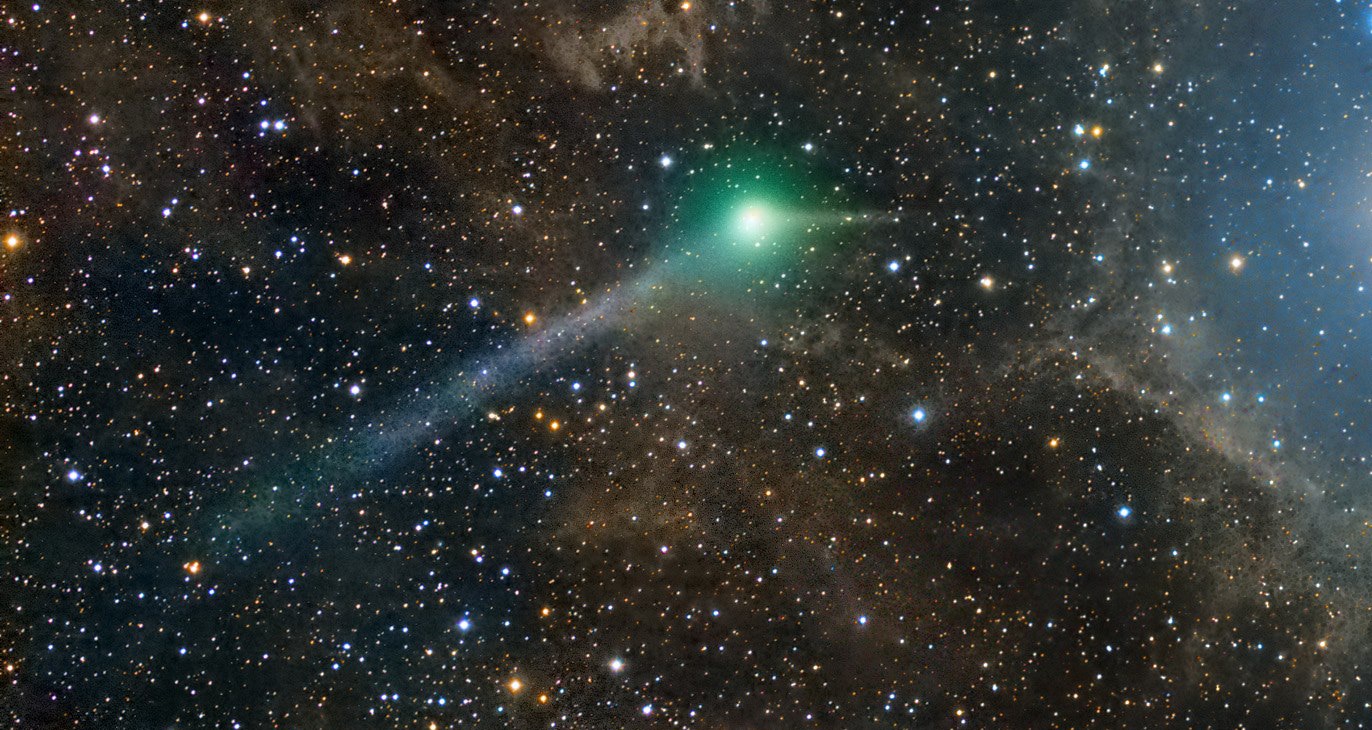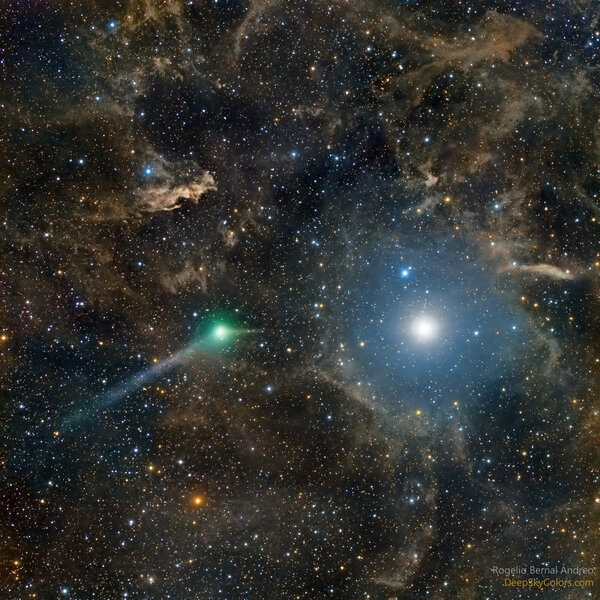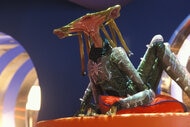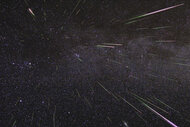Create a free profile to get unlimited access to exclusive videos, sweepstakes, and more!
A comet true as the north star

In late 2014 and early 2015 a spectacular comet graced our skies. Called C/2014 Q2 (Lovejoy), it was a visitor from deep space; its orbit takes it out to something around 180 billion kilometers from the Sun (40 times the distance of Neptune from the Sun!), taking it well over 10,000 years to complete a single orbit.
When it passed Earth back then, it grew bright enough to spot with the naked eye; I saw it myself with binoculars just before the end of 2014 when it was in Orion, and its tail was pretty easy to see.
The orbit of Comet Lovejoy is tipped nearly perpendicular to the plane of Earth's orbit, so on its way out it screamed north in our sky. By the end of May 2015 it was so far north in the sky that it passed a mere one degree from Polaris, the North Star. By then it had faded a lot — it was over 300 million kilometers from Earth — but it was still bright enough to make for a gorgeous astrophotography target. And good news: The fantastic astrophotographer Rogelio Bernal Andreo took the challenge.
This picture is simply stunning. The bright star is, of course, Polaris. The comet is to the left, and there are a few things worth noting about it.
First, the color: It's green! That's due to the presence of a molecule called diatomic carbon, or C2 (literally two carbon atoms bound together). This molecule, when hit by sunlight, responds by emitting light that is strongly green (and more weakly in the blue as well). At its peak, the comet was shedding about 400 kilograms of C2 every second, so there was plenty out there to glow.
Next, you can see that it has two tails. That's pretty common, actually. When a comet is warmed by the Sun, the ice near and on the surface turns into a gas and blows off. The solar wind, a stream of subatomic particles from the Sun, pushes this material away from the comet. The gas can be stripped of electrons, becoming ionized, and so we call this the ion tail. It generally glows blue or green due to various molecules and atoms in it (like C2). The solar wind is very fast (several hundred kilometers per second), so the ion tail is narrow and usually pushed straight away from the Sun.
At the same time, rocky dust embedded in the ice is released as well. These particles are too big to be affected strongly by the solar wind, but do respond to the pressure of sunlight. This pushes the material away from the comet as well and generally lags behind the comet in its orbit. This makes the dust tail more curved and fuzzy-looking (though the curve is more difficult to see in this photo).
So the two tails can point in different directions, and depending on our viewing geometry they can even look like they're heading in opposite directions! In the case of Rogelio's photo, the angle between them is pretty big. The ion tail looks like it's pointing right at Polaris, but again that's just a trick of perspective.
On top of all that, there is a lot of wispy junk floating around in the image as well. This has many names, including the poetic galactic cirrus (which I love) and the more prosaic integrated flux nebula. This is material in between the stars, lit by the extremely dim diffuse glow of background stars in the galaxy.
This interstellar stuff is exceedingly faint, and Rogelio had to fiddle with the contrast to get it to show so clearly (you can compare this shot to another he took of Polaris that shows it less obviously). Amazingly, this wasn't a terribly long exposure; it totals just under an hour (split into three filters to make the image color, and another without any filter to get as deep and faint as possible). It helped significantly that he was at a fairly dark site in California and using a pair of phenomenal telescopes to capture the images, too.
Comet Lovejoy is gone now, and won't be coming back for a hundred centuries. But more comets appear all the time. They're notoriously capricious, and it's too early to know what will happen in the coming year (though a handful of them show some promise to get decently bright). Lovejoy was truly wonderful to see, and I hope we get another like it soon.















